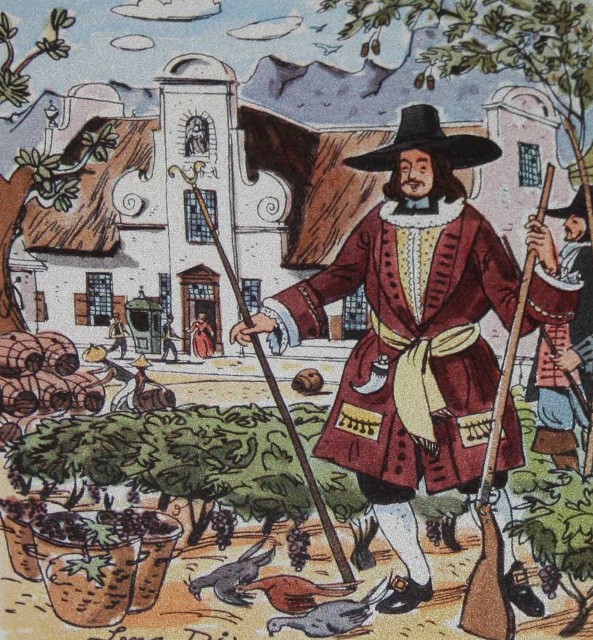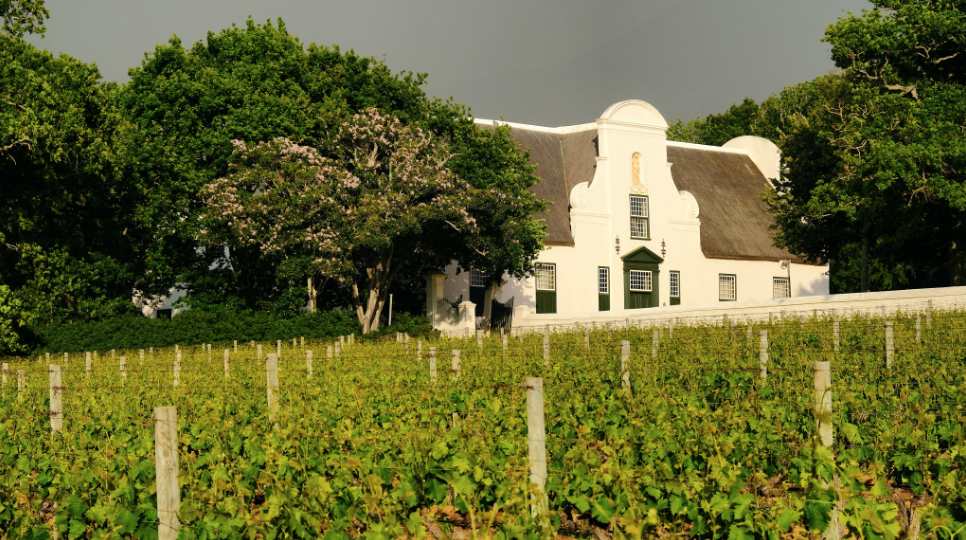‘Today, praise be to God, wine was made for the first time from Cape grapes.’
If it was not for this 2 February 1659 diary entry of Jan van Riebeeck, South Africans would have never known the exact date its flourishing wine industry was born.

Jan van Riebeeck, the first governor of the Cape, planted a vineyard in 1655, and on 2 February 1659, the first wine was made from Cape grapes. This led to the planting of vines on a larger scale at Roschheuvel, known today as Bishopscourt, Wynberg. Van Riebeeck strongly encouraged farmers to plant vineyards although initially they were most reluctant.
A Rough Ride
There were many setbacks in the beginning, chiefly because of the farmers’ ignorance of viticulture. Things improved when Van Riebeeck was succeeded in 1679 by Simon van der Stel, who was not only enthusiastic but very knowledgeable about viticulture and winemaking. He planted a vineyard on his farm Constantia and made good wine from the outset. Later, Constantia was acquired by the Cloete family and their wines became world-famous. To this day, Constantia wine is mentioned when the world’s finest examples are discussed.
The Dutch had almost no wine tradition and it was only after the French Huguenots settled at the Cape between 1680 and 1690 that the wine industry began to flourish. As religious refugees, the Huguenots had very little money and had to make do with the bare essentials. They also had to adapt their established winemaking techniques to new conditions. But with time their culture and skills left a permanent impression on our wine industry, and on life at the Cape.

The 18th century was a difficult phase for the wine industry. There was resistance to Cape wines from the European and Far East export markets and the quality of some Cape wines left much to be desired. A critical shortage of oak vats made it difficult to age wine properly. Some of the vats used for exporting wine had previously even been used to brine meat. Meanwhile, the industry struggled to identify the best varieties for each district and to adapt winemaking techniques to local conditions.
The first half of the 19th century brought prosperity to the industry. The British occupation of the Cape, in addition to Britain’s war with France, created a large new market for Cape wines. The vines at the Cape increased within 45 years from 13 to 55 million and wine production from 0,5 million to 4,5 million litres.

However, 1861 brought disaster. Britain finally resolved her differences with France, and South Africa’s wine exports collapsed. In 1886, the disease phylloxera was discovered at the Cape and decimation of the vineyards followed.
The year 1899 saw the beginning of the Anglo-Boer War. The wine industry was in chaos. A proliferation of new plantings caused overproduction and 25 years of hardship followed.
It was Charles Kohler who set out to alleviate the situation. His efforts led to the creation in 1918 of the Ko-operatieve Wijnbouwers Vereniging van Zuid-Afrika Beperkt (KWV). An umbrella for its farmer members, the KWV brought stability to the industry, placing it on the road to growth and prosperity. The foundation was laid for today’s thriving wine industry.
The timeline chronicles some of the important milestones in the South African wine industry.




